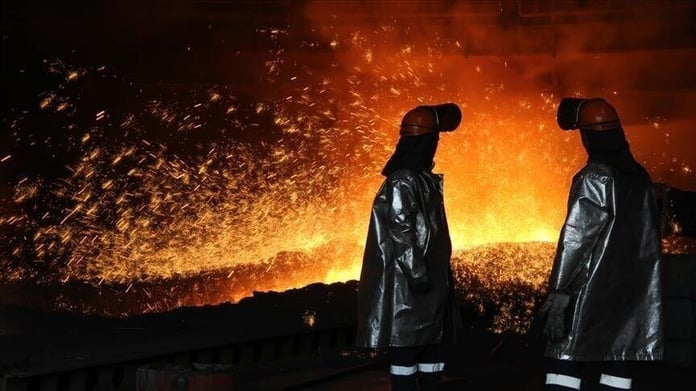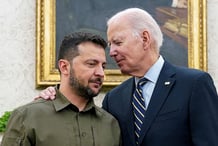
Remarkably, since 2019 China has invested billions of dollars in iron mines in Algeria and Guinea, and imported iron ore from Mauritania, which raises the question about the secret of this sudden interest, which is about to turn into a new economic weapon similar to oil.
The story started from Australia, from which China imports two-thirds of its iron ore imports, and consumes more than one billion tons annually, to meet its growing industries and giant projects in real estate, public works and infrastructure, making it the largest importer of iron ore in the world.
But the good trade relations between Beijing and Canberra have deteriorated in recent years, with the emergence of the Corona virus in China at the end of 2019.
Australia was the first country to officially and publicly call for an investigation by the World Health Organization, the source of the virus.
The reference was clear to China, and a veiled accusation that it might be behind the “manufacturing” of this virus in one of its laboratories in Wuhan, which sparked the madness of Beijing, which declared an economic war on Australia.
Iron temporarily survives the economic war
The Chinese market absorbs about 40 percent of Australian exports, but this percentage is even higher when it comes to iron ore, which accounts for about 66 percent of China’s imports of this mineral.
In 2019, Beijing imported about 1.07 billion tons of iron ore, of which 664.57 million tons were from Australia, with a value of $63 billion annually (while the total Australian iron exports amounted to $96.5 billion).
The political crisis erupted between the two countries, due to Canberra publicly criticizing what she described as “China’s failure to fulfill its commitments to Hong Kong and Xinjiang (East Turkestan)”, in addition to depriving the Chinese mobile phone giant “Huawei” from building the country’s fifth-generation network.
In 2018, Australia issued a law banning the financing of political parties from foreign countries, and China was at the top of the list in terms of the volume of donations by 80 percent, according to Antoine Bondaz, a French researcher specializing in strategic issues in East Asia.
The issue of Australia replacing the conventional French submarine deal with US nuclear-powered submarines only made matters worse, with Chinese newspapers warning that this deal threatens the region with nuclear war.
The accumulated political crisis soon turned into a media and then economic war, as China sought to curb Australian exports to its markets such as coal, beef, wine, cotton and copper, but it exempted iron ore from the sanctions.
So far, China has not found a quick substitute for Australian iron in the large quantities that its markets need, which increased the demand for this metal in the international market and its prices.
Africa is an alternative to Australia’s iron
In light of China’s desire to punish Australia by reducing the volume of its exports to its markets (more than 153 billion dollars), especially iron ore, it has found its place in Africa.
Where China headed to Guinea, in West Africa, where one of the largest iron mines in the brown continent was discovered, in an area called Simandu (south) near the border with Sierra Leone, with a reserve of 2.4 billion tons.
A group of Chinese companies decided to invest 9 billion euros in Simando in 2019, after a consortium led by Chinese companies obtained a license to exploit part of the mine, which witnessed fierce and sometimes unfair competition between several French, Israeli, British and Australian companies.
However, the coup in September of a colonel in the army loyal to France against President Alpha Condé, who is close to China, threatens the latter’s interests in Semandu.
On March 30, the alliance of three Chinese companies succeeded in signing a memorandum of understanding with Algeria to exploit the iron mine in Ghar Jbeilat (southwest), which is believed to be the largest mine in Africa and among the three largest mines in the world with a reserve of 3.5 billion tons.
Although previous studies talked about investments ranging between 10 and 20 billion dollars to exploit the Ghar Jbeilat mine with all its facilities (railways, iron and steel factory..), China managed to reduce the bill to only two billion dollars, divided into three phases, so that the The project is self-financed after completion.
But the quantities that will be extracted from Ghar Jbeilat range from 10 to 50 million tons after completing all stages in the horizons of 2025, which is much less than to cover China’s needs (one billion tons), in addition to the fact that an important part of Algerian iron will go to feed the country’s steel factories. , which reduces the volume of exports.
Another option for Beijing is to head to Mauritania, which is the second-largest exporter of iron ore in the brown continent after South Africa.
According to the Mauritanian researcher specializing in Chinese affairs, Yerban Al-Kharshi, the Chinese Foreign Ministry publishes on its website that Mauritania’s reserves of iron ores amount to 8.7 billion tons, which makes us ranked fifth in the world.
But the Chinese interest in Mauritanian iron is not new. Since 2009, China has become the first importer of it. Rather, it has acquired 70 percent of the country’s exports of this mineral, which is accompanied by fish exports, the first source of hard currency.
With the Mauritanian iron mines near the Ghar Jbeilat mine in Algeria, we may witness in the future linking the two projects with railways, steel factories in Algeria, and export ports in western Mauritania or northern Algeria within the framework of the Chinese “Silk Road”.
However, Mauritania, which is under French and American influence, is reluctant to build a comprehensive strategic partnership with China, in order to avoid the fate of Alpha Conde in Guinea.
In general, the Sino-Australian dispute served the countries of North and West Africa in terms of facilitating the entry of billions of investments to exploit iron mines, which will strengthen the infrastructure in these remote areas, whether through the construction of railways, ports, power stations, and the transmission of gas and water to these areas.
It will also provide the technology and experience in extracting minerals and converting them into semi-finished materials, not to mention that the high Chinese demand for iron ore helped in improving prices, making these projects economically feasible.













